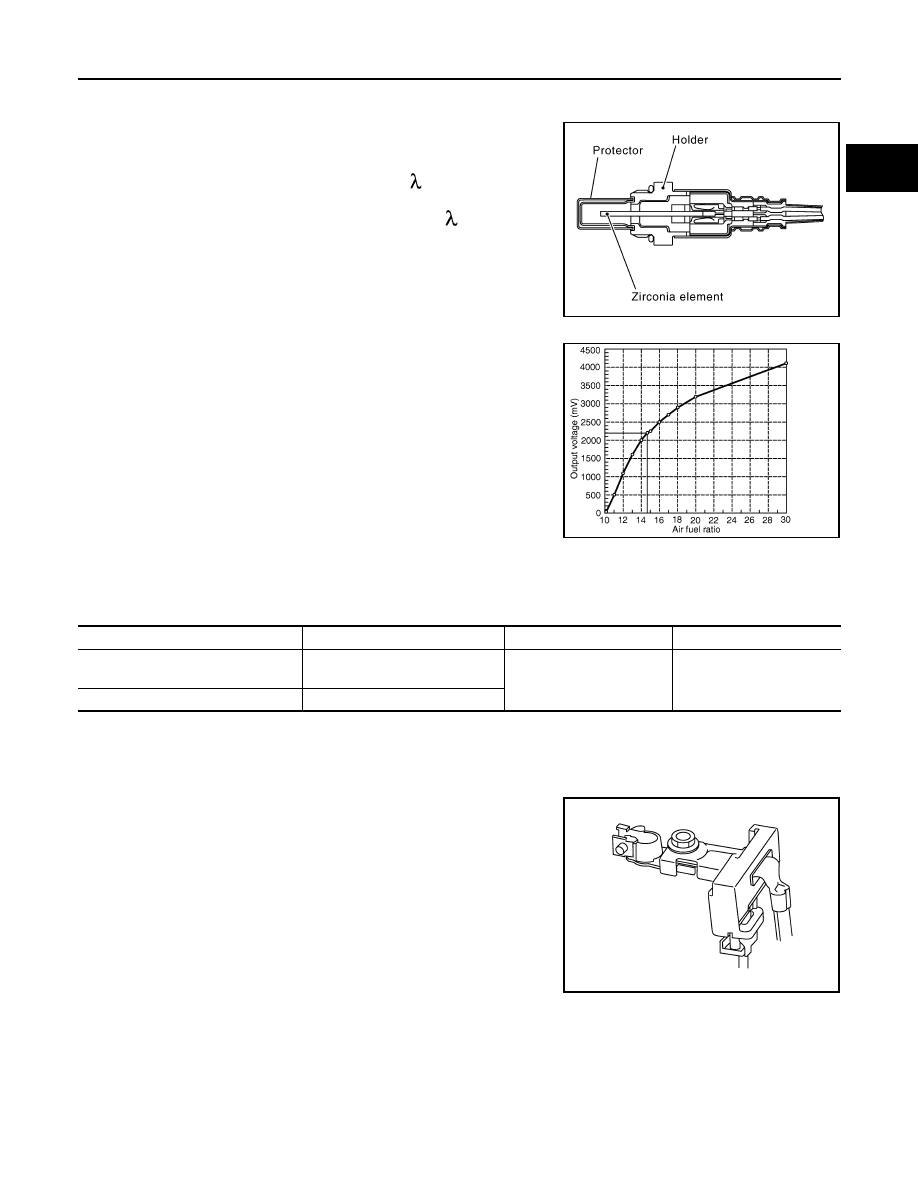Nissan Versa Sedan. Instruction - part 255

COMPONENT PARTS
EC-19
< SYSTEM DESCRIPTION >
[HR16DE]
C
D
E
F
G
H
I
J
K
L
M
A
EC
N
P
O
Air Fuel Ratio Sensor 1
INFOID:0000000009266955
The air fuel ratio (A/F) sensor 1 is a planar one-cell limit current sen-
sor. The sensor element of the A/F sensor 1 is composed an elec-
trode layer, which transports ions. It has a heater in the element.
The sensor is capable of precise measurement = 1, but also in the
lean and rich range. Together with its control electronics, the sensor
outputs a clear, continuous signal throughout a wide range.
The exhaust gas components diffuse through the diffusion layer at
the sensor cell. An electrode layer is applied voltage, and this current
relative oxygen density in lean. Also this current relative hydrocar-
bon density in rich.
Therefore, the A/F sensor 1 is able to indicate air fuel ratio by this
electrode layer of current. In addition, a heater is integrated in the
sensor to ensure the required operating temperature of about 800
°C
(1,472
°F).
Air Fuel Ratio Sensor 1 Heater
INFOID:0000000009266956
SYSTEM DESCRIPTION
The ECM performs ON/OFF duty control of the A/F sensor 1 heater corresponding to the engine operating
condition to keep the temperature of A/F sensor 1 element within the specified range.
Battery Current Sensor
INFOID:0000000009496745
The battery current sensor is installed to the battery cable at the neg-
ative terminal. The sensor measures the charging/discharging cur-
rent of the battery.
The power generation voltage variable control enables fuel con-
sumption to be decreased by reducing the engine load which is
caused by the power generation of the generator.
Based on sensor signals, ECM judges whether or not the power
generation voltage variable control is performed. When performing
the power generation voltage variable control, ECM calculates the
target power generation voltage based on the sensor signal. And
ECM sends the calculated value as the power generation command
value to IPDM E/R.
CAUTION:
Never connect the electrical component or the ground wire directly to the battery terminal. The con-
nection causes the malfunction of the power generation voltage variable control, and then the battery
discharge may occur.
JMBIA0112GB
PBIB3354E
Sensor
Input Signal to ECM
ECM function
Actuator
Camshaft position sensor (PHASE)
Crankshaft position sensor (POS)
Engine speed
Air fuel ratio (A/F) sensor 1
heater control
Air fuel ratio (A/F) sensor 1
heater
Mass air flow sensor
Amount of intake air
JPBIA3262ZZ